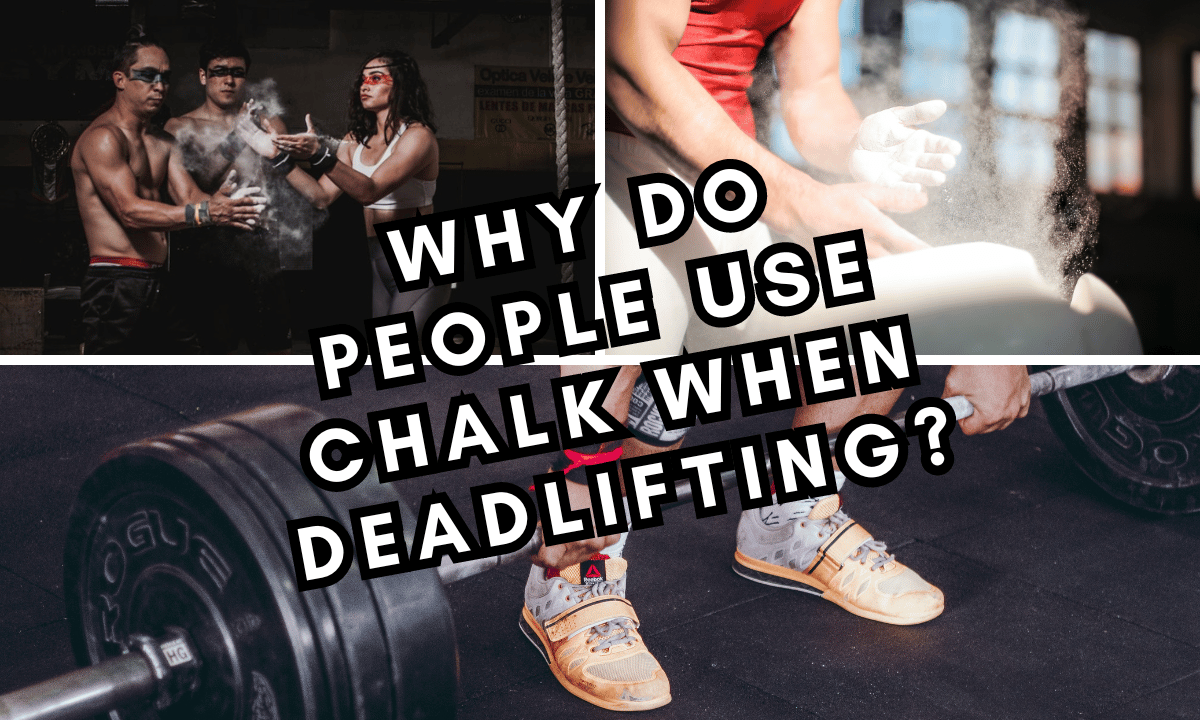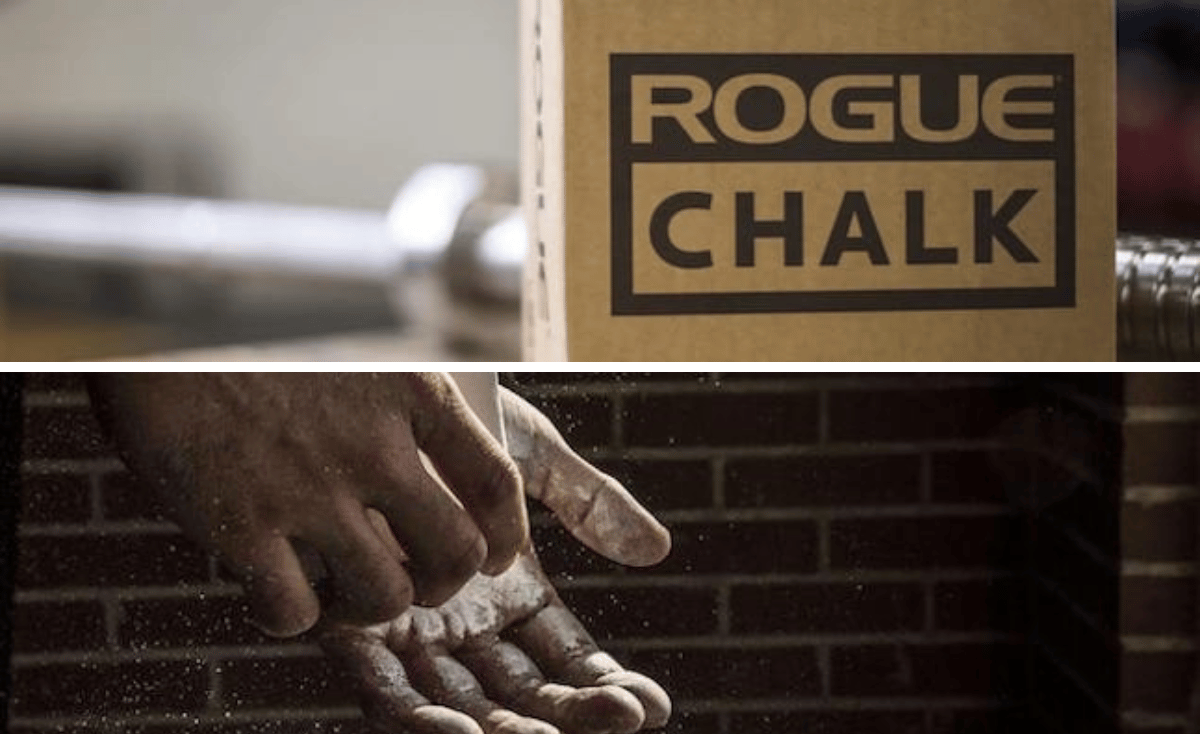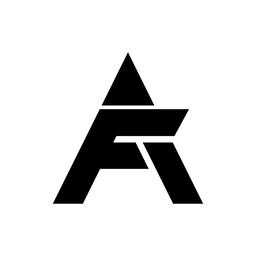Grip plays a crucial role in various activities, from weightlifting to rock climbing. It’s no wonder that athletes and fitness enthusiasts alike seek tools to enhance their grip, such as gym chalk and liquid chalk. But which one is better suited for your needs? Is gym chalk better than liquid chalk?
In this comparative analysis, we’ll delve into the composition, application, benefits, and potential drawbacks of these two popular grip-enhancing options. By the end of this blog post, you’ll have a clearer understanding of which chalk type is best for you and your specific activities.
Key Takeaways
- Gym chalk and liquid chalk offer unique benefits, with the best choice depending on individual preferences.
- Both are easy to use for any workout, but liquid chalk offers a cleaner environment and longer-lasting grip solution.
- Health & safety considerations should be taken into account when deciding between gym or liquid chalk to avoid potential respiratory & skin sensitivity issues.
Understanding Gym Chalk and Liquid Chalk

Gym chalk and liquid chalk are both widely used to improve grip during various activities, but they differ in composition, application, and benefits.
Gym chalk, also known as powdered or block chalk, is primarily composed of magnesium carbonate, which effectively absorbs moisture and provides a better grip during workouts.
On the other hand, liquid and dry chalk options, including powdered chalk and powder chalk, are available for athletes, with liquid chalk being a mixture of magnesium carbonate, alcohol, and water, which dries quickly and provides a more even application than traditional gym chalk.
Gym Chalk Composition
Gym chalk is principally composed of magnesium carbonate. The reason magnesium carbonate is used in gym chalk instead of other substances is due to its insolubility in water, preventing dissolution when coming into contact with sweat or moisture. This attribute allows for a better grip and impedes slipping during workouts or activities.
Moreover, magnesium carbonate is favored over other substances such as calcium carbonate as it has a gentler texture and superior adherence to the skin. Some benefits of magnesium carbonate include:
- It provides a better grip for athletes and climbers
- It absorbs moisture and sweat, keeping hands dry
- It reduces friction and prevents slipping
- It helps prevent blisters and calluses
Although magnesium carbonate is the primary ingredient in gym chalk, some high-end climbing chalks may include additional components, such as limestone, essential oils, and drying agents.
Liquid Chalk Composition
Liquid chalk is a mixture comprised of magnesium carbonate, alcohol, and water. The alcohol in liquid chalk aids in the rapid drying process, allowing for a uniform application and a longer-lasting grip on the hands.
Additionally, the alcohol content in liquid chalk serves as a disinfectant, helping to prevent the spread of viral and bacterial diseases.
When you choose liquid chalk, its unique composition makes it a popular alternative to regular chalk, especially for those who prefer a less messy and more even application of gym chalk as opposed to using hand chalk or loose chalk.
In the debate of liquid chalk vs conventional chalk, it ultimately comes down to personal preference.
Comparing Gym Chalk and Liquid Chalk
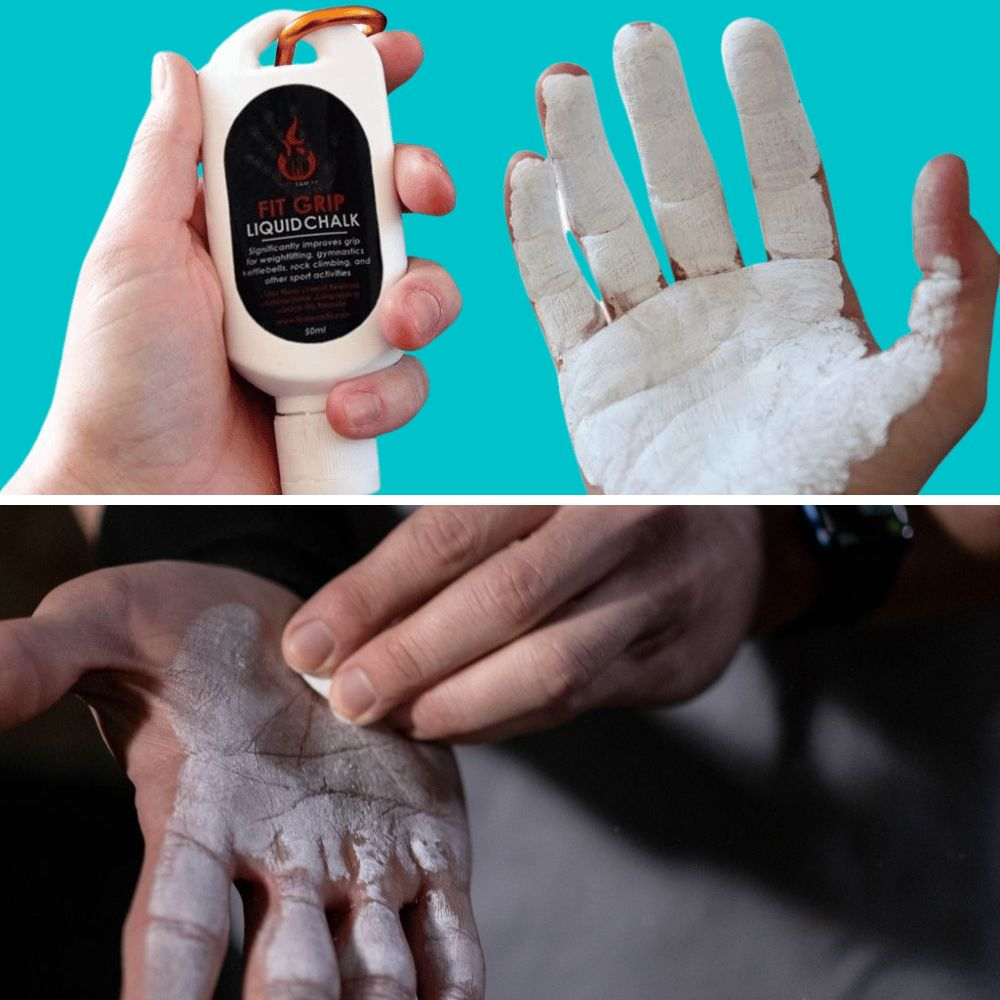
The following analysis of gym chalk and liquid chalk factors in their ease of use, messiness, longevity, and cost to assist you in determining the best fit for your needs.
While gym chalk is a tried-and-true option for many athletes and fitness enthusiasts, liquid chalk has emerged as a popular alternative due to its unique benefits and characteristics.
Ultimately, the choice between gym chalk and liquid chalk will depend on your individual preferences and the specific activities you engage in.
Ease of Use
To apply gym chalk correctly, follow these steps:
- Begin with clean and dry hands.
- Take a block or ball of gym chalk in one’s hand.
- Rub the chalk between one’s palms, fingers, and on the back of one’s hands.
- Cover all areas that come in contact with the equipment or barbell.
- Shake off any excess chalk.
- Repeat the process if necessary during one’s workout.
In contrast, liquid chalk takes longer to apply but lasts longer on the hands, reducing the need to reapply hand chalk frequently. To apply liquid chalk, follow these steps:
- Pour a modest amount onto one hand.
- Spread it evenly over both palms by rubbing for approximately 5-10 seconds.
- Allow it to dry for roughly 15-30 seconds until it is completely dry.
Messiness
One of the main advantages of liquid chalk over gym chalk is its reduced messiness. Gym chalk can be quite messy due to factors such as dust, spillage, and the need for frequent reapplication. This can result in residue on surfaces, equipment, and clothing.
Liquid chalk offers an advantage over traditional chalk as it is significantly less messy. It adheres to the hands and leaves very little residue. This makes liquid chalk a more convenient option for those who prefer a cleaner workout environment.
Longevity
Liquid chalk generally lasts longer than gym chalk, making it a better option for those who need a consistent grip during lengthy workouts. Dry chalk must be reapplied almost prior to each set as it dissipates rapidly, while liquid chalk tends to be more enduring. If applied properly, liquid chalk can remain effective for a period of 5-20 minutes.
Cost
Gym chalk is typically cheaper than liquid chalk, with a 1lb pack of gym chalk ranging from $10 to $30, while the average price of liquid chalk is approximately $16.99. However, liquid chalk may be more cost-effective in the long run due to its longevity and reduced messiness.
Ultimately, the choice between gym chalk and liquid chalk in terms of cost will depend on your individual preferences and usage patterns.
Best Practices for Using Gym Chalk and Liquid Chalk
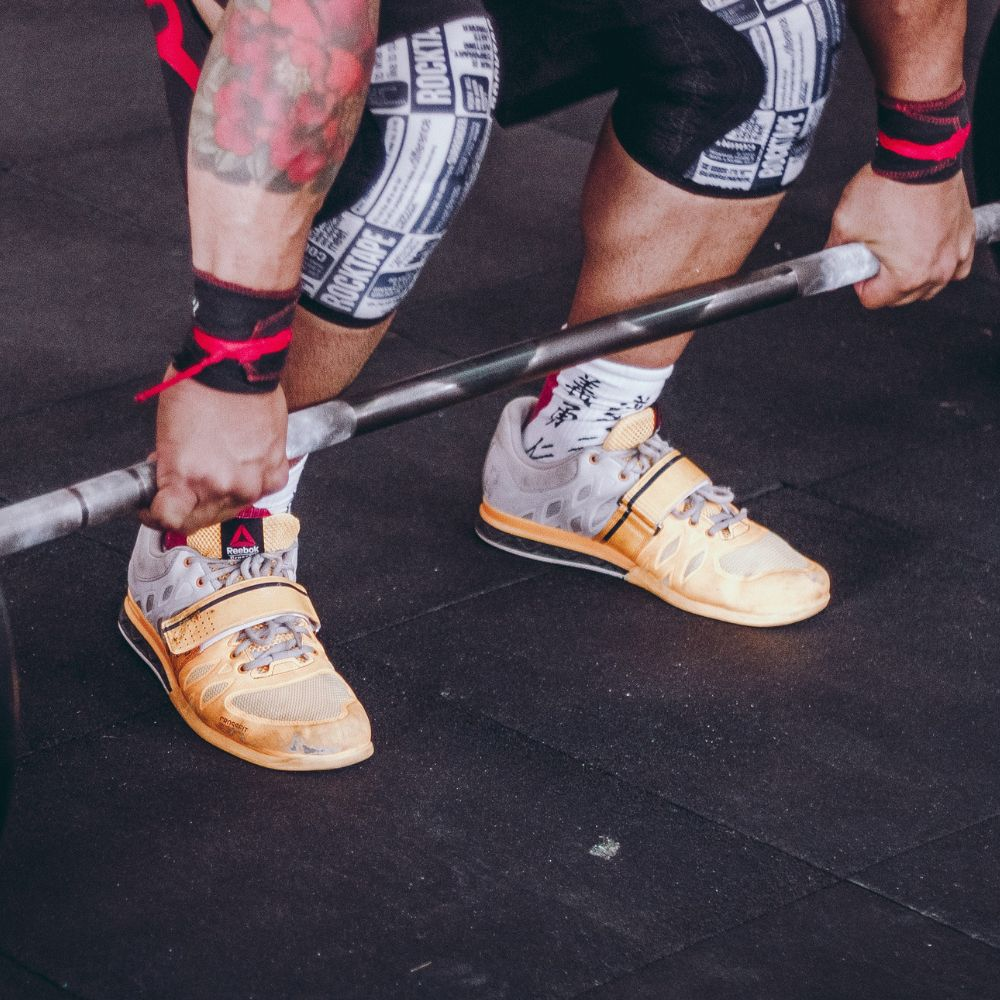
This section presents guidelines on effectively using gym chalk and liquid chalk across various activities like:
- heavy lifting
- pull-ups
- rock climbing
- bouldering
Choosing the right type of chalk for your specific activities can greatly impact your performance and experience.
A grasp of the pros and cons of gym chalk and liquid chalk equips you to make a more informed selection that best suits your needs.
Heavy Lifting and Pull-ups
Gym chalk is recommended for heavy lifting and pull-up exercises, as it provides a better grip and is more hygienic than gloves. Gym chalk can:
- Avert sweat and guarantee a dry hold on the bar
- Enhance grip and reduce the chance of slipping
- Allow you to lift heavier loads
- Execute pull-ups with better control and stability
Furthermore, gym chalk absorbs sweat and moisture from your hands, preventing them from getting slippery during intense workouts.
Rock Climbing and Bouldering
Liquid chalk is preferred for rock climbing and bouldering due to its even application, reduced mess, and longer-lasting grip. To utilize liquid chalk for rock climbing and bouldering, it is suggested to apply it directly to the middle finger of each hand and use one’s thumb to spread it over the fingertips. Washing one’s hands prior to application is also recommended.
Liquid chalk’s unique composition makes it a popular choice for rock climbers, as it provides an improved grip, enhances their performance, and liquid chalk prevent calluses.
A chalk bag can be a helpful accessory to store this essential climbing aid, while a chalk block can be an alternative option for those who prefer traditional chalk.
Health and Safety Considerations
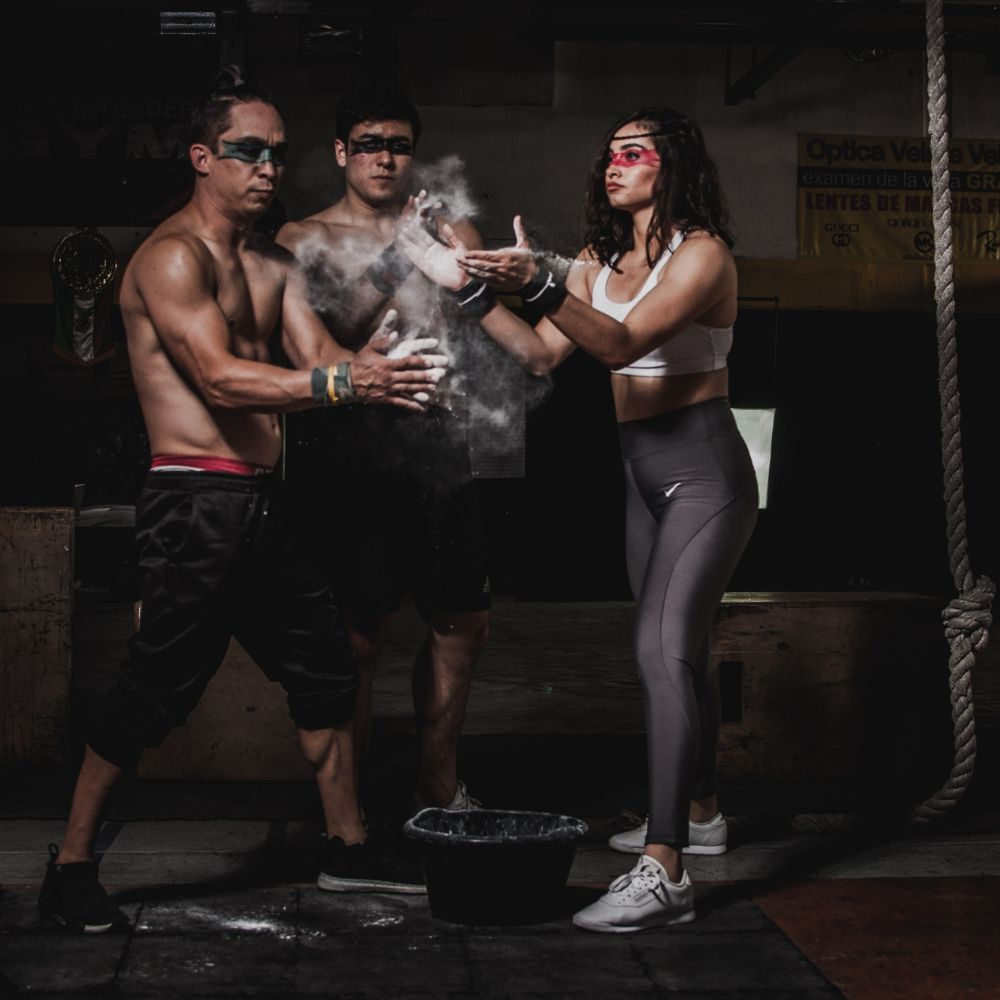
Health and safety considerations for using gym chalk and liquid chalk are important to keep in mind. The following discussion highlights potential respiratory concerns and skin sensitivity issues associated with the use of both gym chalk and liquid chalk.
By understanding these potential issues, you can make a more informed decision about which type of chalk is best for you.
Respiratory Concerns
Gym chalk can cause respiratory issues due to airborne particles, while liquid chalk is less likely to cause such problems. Inhaling gym chalk dust can potentially result in coughing, wheezing, and irritation of the eyes, nose, throat, and lungs.
It may also exacerbate conditions such as asthma and chronic obstructive lung disease.
Prolonged inhalation of chalk dust can result in a buildup of the mineral in the lungs, potentially leading to health issues in the future.
Skin Sensitivity
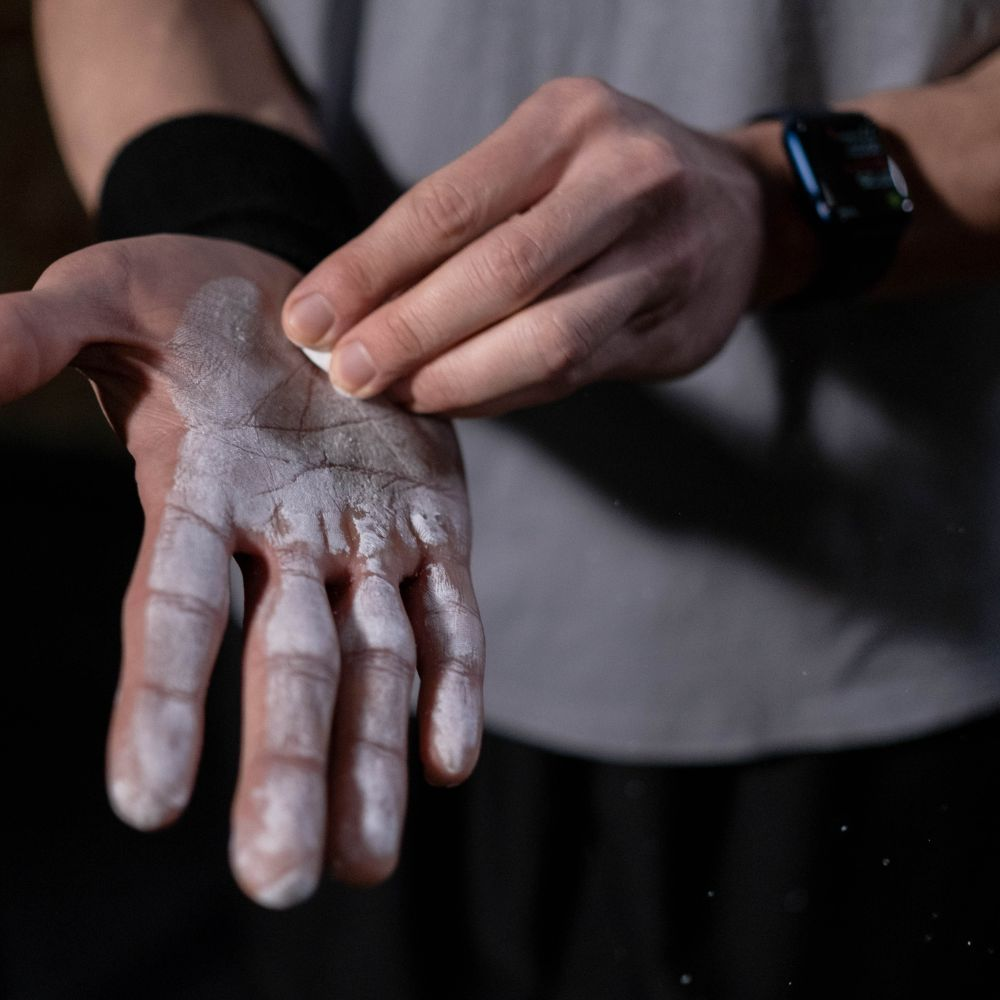
Liquid chalk may cause skin dryness and irritation due to its alcohol content, while gym chalk is gentler on the skin. The alcohol content in liquid chalk facilitates rapid drying on the skin and serves as a disinfectant. Allergies to chalk or isopropyl alcohol are highly unusual.
On the other hand, gym chalk can also cause skin overdrying and fracturing if overused. It is critical to find a balance and not use too much chalk to avoid these negative implications.
Personal Stories and Preferences
Personal stories and preferences from athletes and fitness enthusiasts highlight the pros and cons of gym chalk and liquid chalk, emphasizing that the choice ultimately depends on individual needs and preferences.
Notable athletes such as Hayley Reichardt, Jake Horst, and Eric Favors prefer gym chalk for their training sessions, utilizing Garage Strength lifting chalk.
Other fitness enthusiasts opt for liquid chalk for its:
- Enhanced grip
- Greater safety
- Improved cleanliness
- Enhanced convenience
- Prolonged performance
- Antibacterial properties
These personal experiences showcase how the choice between gym chalk and liquid chalk is a matter of individual preference and specific activity requirements.
Summary
In conclusion, both gym chalk and liquid chalk offer unique benefits and drawbacks, making the choice between the two a matter of individual preference and specific activity requirements.
Gym chalk is a classic option that is gentler on the skin and more cost-effective, while liquid chalk is a more modern alternative with an even application, reduced mess, and longer-lasting grip.
By understanding the differences between gym chalk and liquid chalk, as well as their health and safety considerations, you’ll be better equipped to choose the right grip-enhancing tool for your needs.
Frequently Asked Questions
Is liquid chalk good for gym?
Liquid chalk is highly recommended for gyms, providing excellent grip and dry hands for heavy lifters. It offers great durability and usability making it a must-have for any fitness enthusiast.
Is gym chalk the same as regular chalk?
Gym chalk and regular chalk are different substances: gym chalk is Magnesium Carbonate while writing chalk is Calcium Sulphate. This difference means regular chalk will be very crumbly, whereas gym chalk absorbs moisture without interfering with your grip, leading to better training.
What is the difference between liquid chalk and regular gymnastics chalk?
Liquid chalk is applied like lotion and quickly dries, creating a longer-lasting layer than regular dry gym chalk. Moreover, it does not create a cloud of chalk dust like the latter. However, some athletes prefer dry gym chalk for its affordability, purity, and gentleness to skin.
Is gym chalk worth it?
Gym chalk is definitely worth it as it offers a better grip and protection against skin tears when doing heavy lifts.
Are there any health risks associated with using gym chalk?
Inhalation of gym chalk dust can cause respiratory issues such as coughing, wheezing, and irritation of the eyes, nose, throat, and lungs, potentially leading to health issues in the future.
